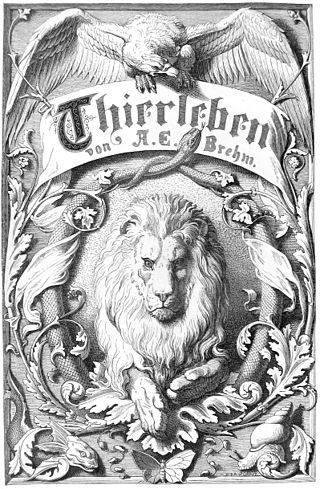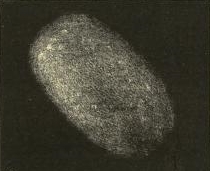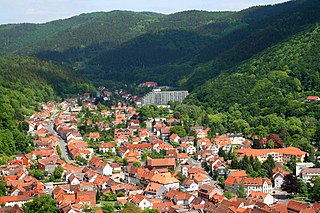
Eric Emerson Schmidt is an American businessman and former computer engineer who was the chief executive officer of Google from 2001 to 2011 and the company's executive chairman from 2011 to 2015. He also was the executive chairman of parent company Alphabet Inc. from 2015 to 2017, and technical advisor at Alphabet from 2017 to 2020. December 2024, he was 45th richest according to Bloomberg Billionaires Index with an estimated net worth of US$37.8 billion.

Chernozem, also called black soil, regur soil or black cotton soil, is a black-colored soil containing a high percentage of humus and high percentages of phosphorus and ammonia compounds. Chernozem is very fertile soil and can produce high agricultural yields with its high moisture-storage capacity. Chernozems are a Reference Soil Group of the World Reference Base for Soil Resources (WRB).

Göbekli Tepe is a Neolithic archaeological site in the Southeastern Anatolia Region of Turkey. The settlement was inhabited from around 9500 BCE to at least 8000 BCE, during the Pre-Pottery Neolithic. It is famous for its large circular structures that contain massive stone pillars – among the world's oldest known megaliths. Many of these pillars are decorated with anthropomorphic details, clothing, and sculptural reliefs of wild animals, providing archaeologists rare insights into prehistoric religion and the particular iconography of the period. The 15 m (50 ft) high, 8 ha (20-acre) tell is densely covered with ancient domestic structures and other small buildings, quarries, and stone-cut cisterns from the Neolithic, as well as some traces of activity from later periods.
Cornelis Johannes "Kees" van Houten was a Dutch astronomer.
Schmidt is a common German occupational surname derived from the German word "Schmied" meaning "blacksmith" and/or "metalworker". This surname is the German equivalent of "Smith" in the English-speaking world.

Brehms Tierleben is a scientific reference book, first published in the 1860s by Alfred Edmund Brehm (1829–1884). It was one of the first modern popular zoological treatises. First published in German as a six volume work that was completed in 1869 it was published by the Bibliographisches Institut of Herrmann Julius Meyer with illustration directed by Robert Kretschmer. The second edition, completed in 1879 had ten volumes. It was translated into several European languages.

5D/Brorsen was a periodic Jupiter-family comet discovered on February 26, 1846, by Danish astronomer Theodor Brorsen. The comet was last seen in 1879 and is now considered lost.

Bad Lauterberg is a town in the district of Göttingen, in Lower Saxony, Germany. It is situated in the southern Harz, approx. 15 km southwest of Braunlage, and 20 km southeast of Osterode am Harz.
Piper Verlag is a German publisher based in Munich, printing both fiction and non-fiction works. It currently prints over 200 new paperback titles per year. Authors published by the company include Andreas von Bülow and Sara Paretsky. It is owned by the Swedish media conglomerate Bonnier. It was founded in 1904 by 24-year-old Reinhard Piper (1879–1953).
William Hannon (1879–1950) was a Catholic priest from the United States who served as the fourth president of St. Ambrose College in Davenport, Iowa, from 1915 to 1926.

Craugastor is a large genus of frogs in the family Craugastoridae with 126 species. Its scientific names means brittle-belly, from the Ancient Greek krauros and gastēr.

The Carpenters were an American vocal and instrumental duo consisting of siblings Karen (1950–1983) and Richard Carpenter. They produced a distinctive soft musical style, combining Karen's contralto vocals with Richard's harmonizing, arranging, and composition. During their 14-year career, the Carpenters recorded 10 albums along with many singles and several television specials.

Hageri is a small borough in Kohila Parish, Rapla County, northern Estonia. As of the 2011 census, the settlement's population was 212. Hageri has an area of 105 ha.

Alexander Carol Schmidt was a Bessarabian-born Imperial Russian and, later Soviet, politician, economist, lawyer and academic. He was the last Tsarist mayor of Chișinău, between 1917 and 1918.

Platynus is a genus of ground beetles in the family Carabidae. There are more than 180 described species in Platynus.

Callichromatini is a tribe of beetles in the subfamily Cerambycinae, which includes the following genera:

Callichroma is a genus of beetles in the family Cerambycidae, containing the following species:
Scleritodermidae is a family of sea sponges.

In the Chicago mayoral election of 1879, Democrat Carter Harrison Sr. defeated both Republican Abner Wright and socialist Ernst Schmidt in a three-way race. Harrison had a nearly nine point margin of victory.

Anisolophus is an extinct genus of proterotheriid from the Early to Middle Miocene of Argentina. The genus was named by Burmeister in 1885 to accommodate the species Anchitherium australe, which they had named earlier in 1879. Soria then referred the species Licaphrium floweri and Anisolophus minisculus to the genus, making Licaphrium, named in 1887 by Florentino Ameghino, a junior synonym of the genus. Both A. australis and A. floweri are known from the Santacrucian age Santa Cruz Formation, while A. minisculus is known from the Collón Curá Formation.














